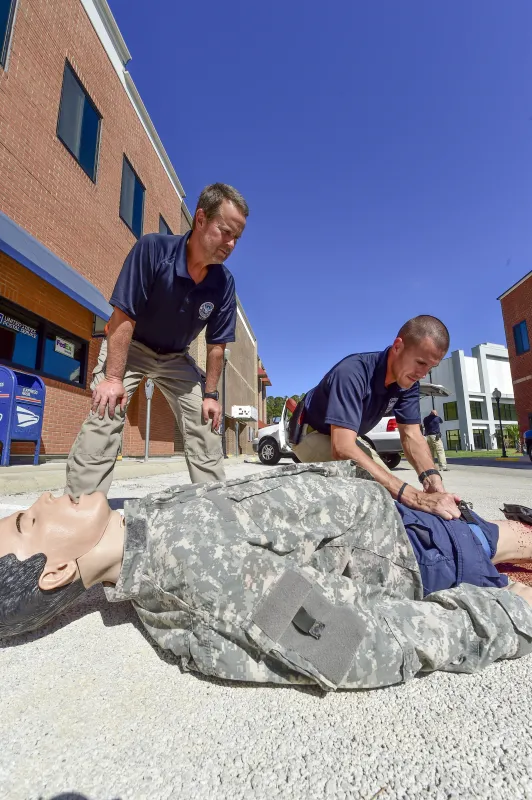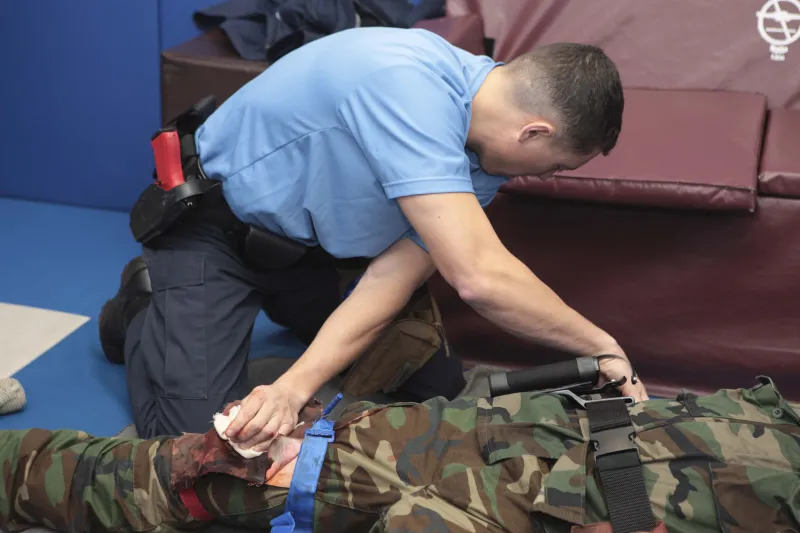In addition to training federal law enforcement, the Federal Law Enforcement Training Centers (FLETC) also has a robust mission to provide training to our nation’s state, local and tribal law enforcement officers. FLETC trained more than 4,500 state, local, tribal, and territorial students last fiscal year.
The program was originally established by President Ronald Reagan as the National Center for State and Local Law Enforcement Training on October 1982 in response to the findings of the Attorney General's Task Force on Violent Crime. Task Force members had serious concerns about the rising crime rate in the United States and urged that the Federal Government take a more active role in providing law enforcement training for state and local agencies.
The State, Local and Tribal Division (SLTD) is located at the FLETC headquarters in Glynco, Georgia, but exports law enforcement training on a variety of topics across the country. Some of the most popular classes include the Active Shooter Threat Training Program, Active Shooter Threat Instructor Training Program, Basic Tactical Medical Instructor Training Program, and Tactical Medical for First Responders.

Since the full implementation of Tactical Medical training at the FLETC, there have been numerous instances of applied training directly attributed to lives saved. Officers receive a minimum of eight hours of training in basic tactical medical procedures and leave the training with a standardized Individual First-Aid Kit (IFAK). The IFAK contains only items to be used for immediate life saving measures during evolving, sometimes austere environments.
Often Tactical Medical Training Students at FLETC use the skills or the IFAK within hours or days of graduation. One student was able to apply a tourniquet to control bleeding for the victim of domestic abuse. Another student used a chest seal to treat the victim of multiple gunshots. One officer who’s partner had been shot, used techniques learned in class including using hemostatic agent to treat his partner and extraction techniques to secure his partner’s weapon and remove him from a second floor window.
While these success stories highlight the programs importance and applicability, it also applies to “everyday” scenarios. A student attending a family function had a family member suffer a major laceration to his upper thigh. The student was able to apply the tourniquet issued with his IFAK and stop the bleeding. This situation highlights the skills taught in the Tactical Medical program and their importance in everyday life, not just law enforcement situations.

A FLETC student applies direct pressure and a tourniquet to simulated wound during a class. (Photo courtesy of FLETC/DHS)
FLETC routinely receives feedback on how the program has impacted the everyday lives of the officers. Officers have begun re-thinking the location of the first-aid kits in their vehicles keeping them accessible and known to other officers, carrying the lifesaving gear with them, evaluating methods to control bleeding, as well as scanning for threats when entering an area. As a result, the Tactical Medical program is impacting the daily activities of officers across the country in ways not seen in many years and saving lives.
The advanced training programs and workshops offered are developed with the advice, assistance and support of federal, state, local, tribal, and campus law enforcement agencies and experts. Training is continuously updated to ensure accuracy and relevance to today’s issues and is certified by each state’s Peace Officer’s Standards and Training (P.O.S.T.) if and when certification is available.
State, local, and tribal law enforcement agencies can find out more on FLETC courses available to them at the FLETC.gov website at https://go.usa.gov/xXCwq
